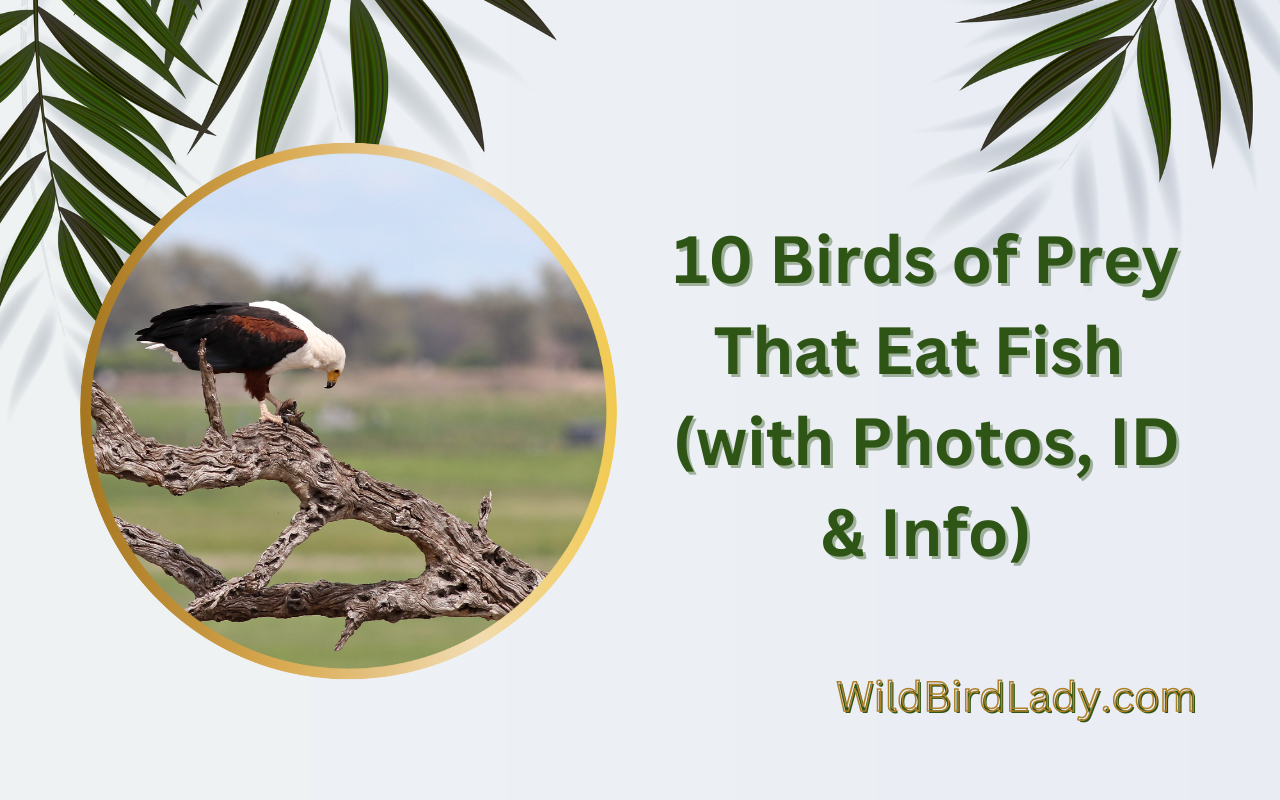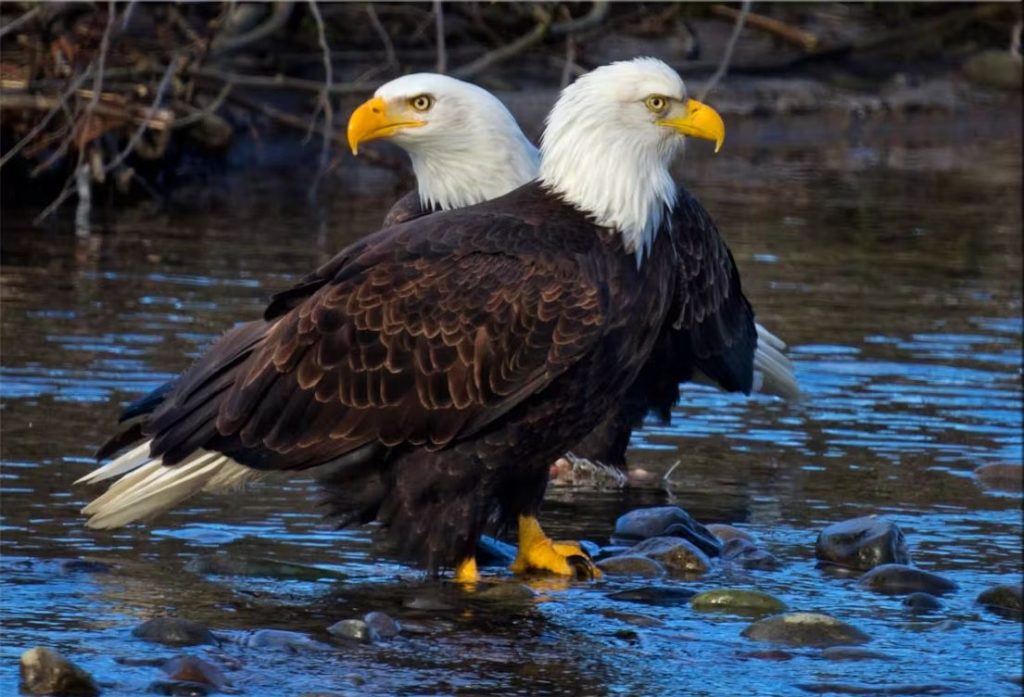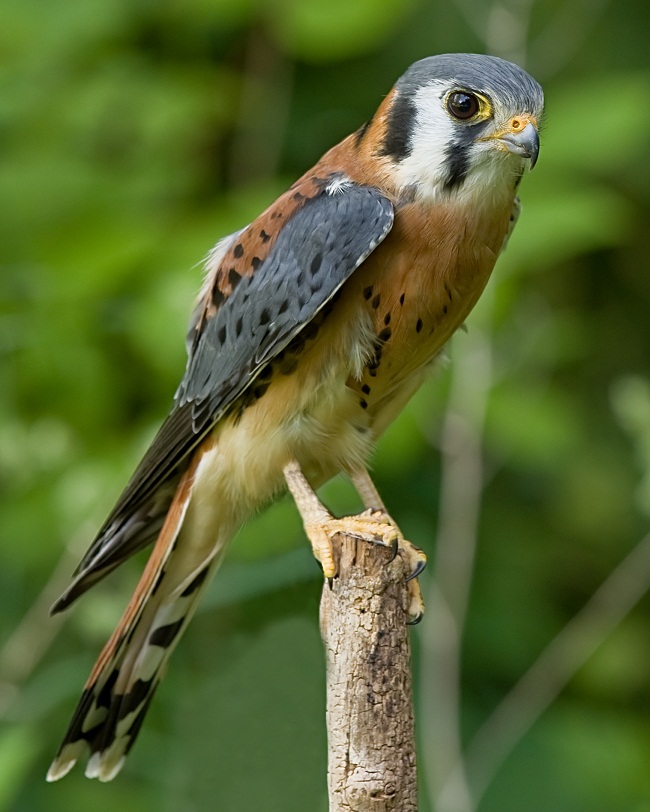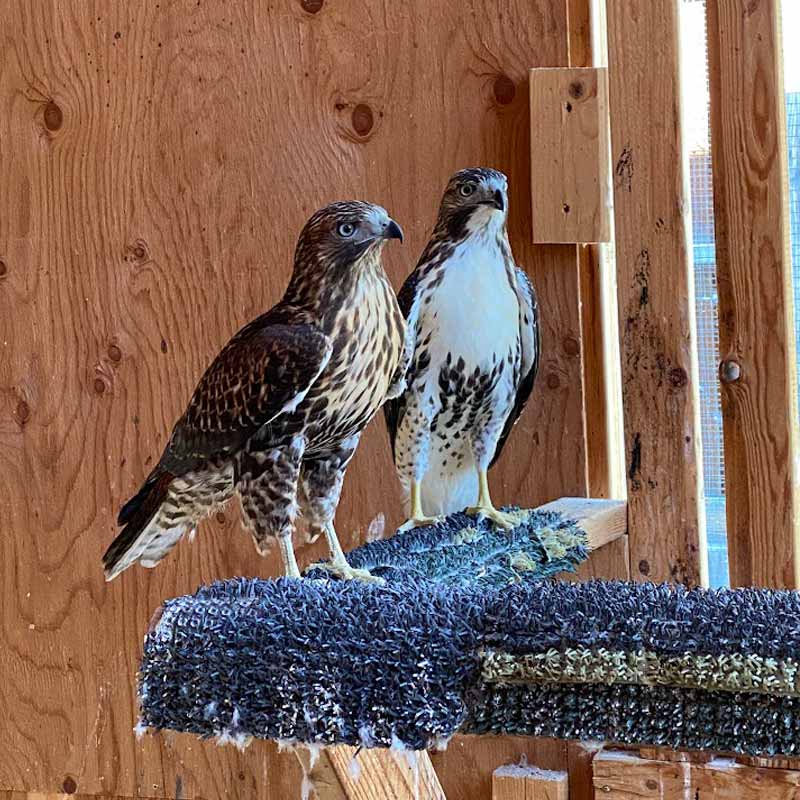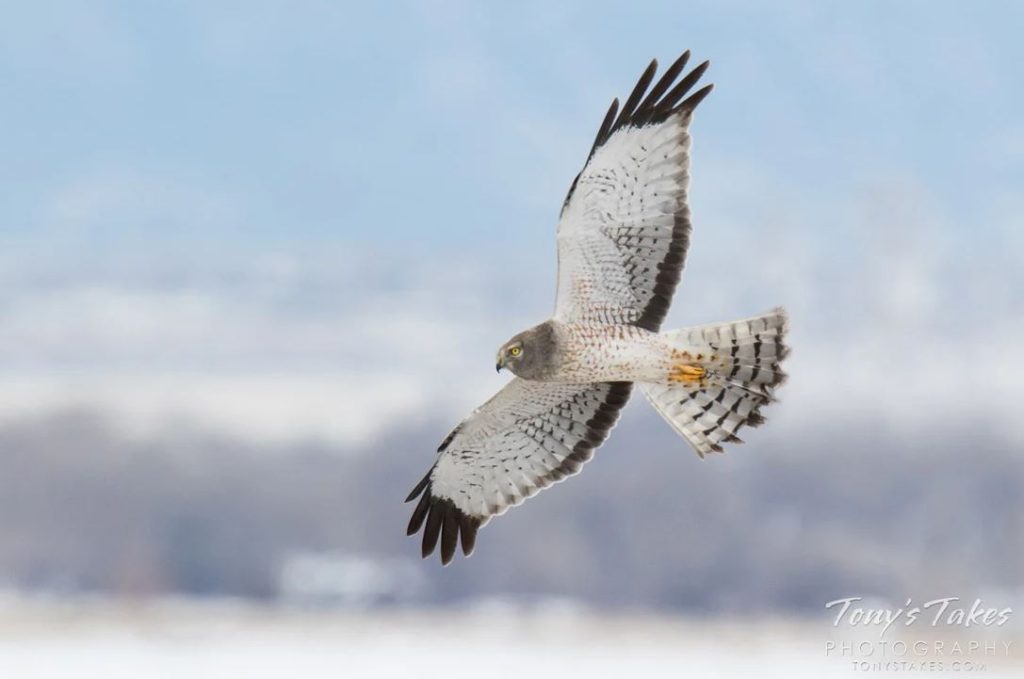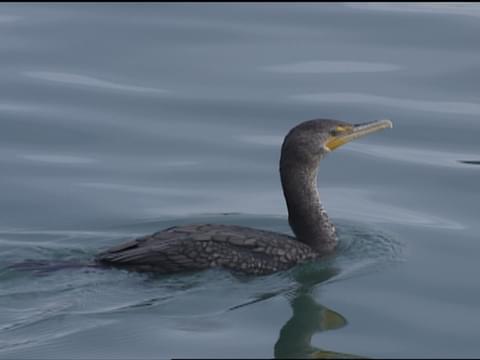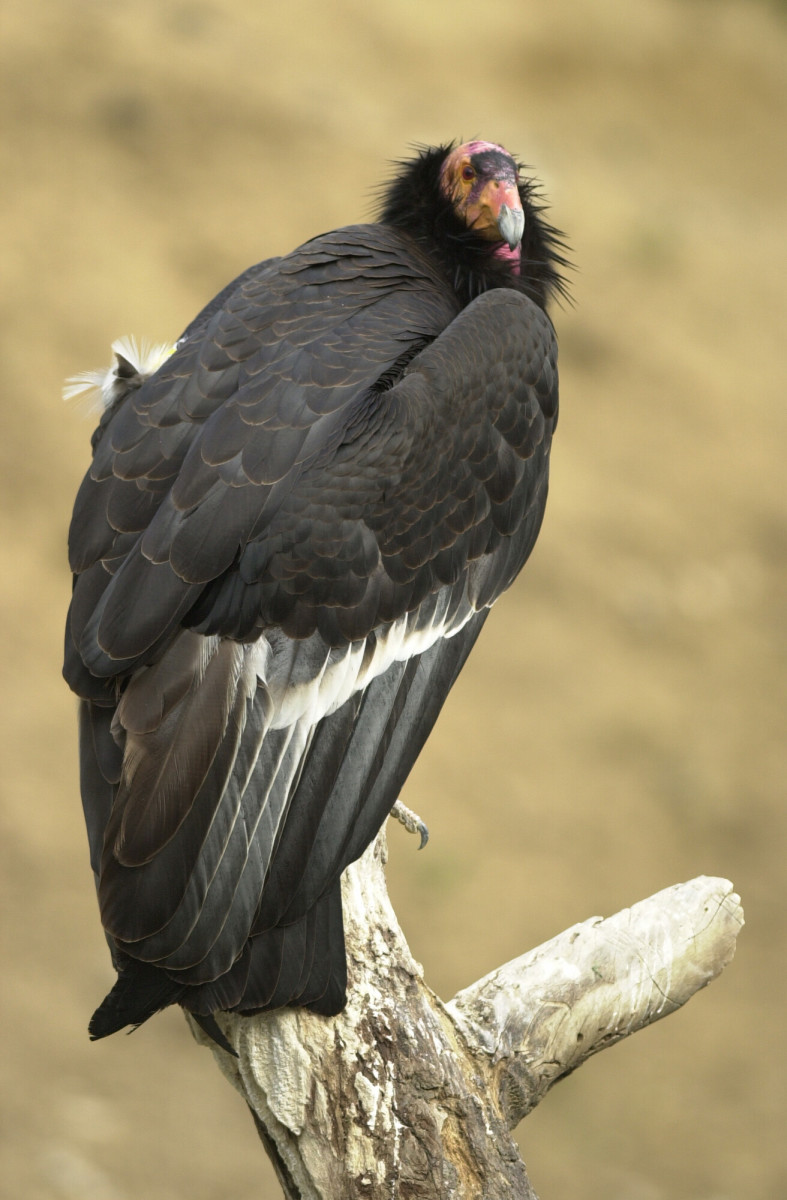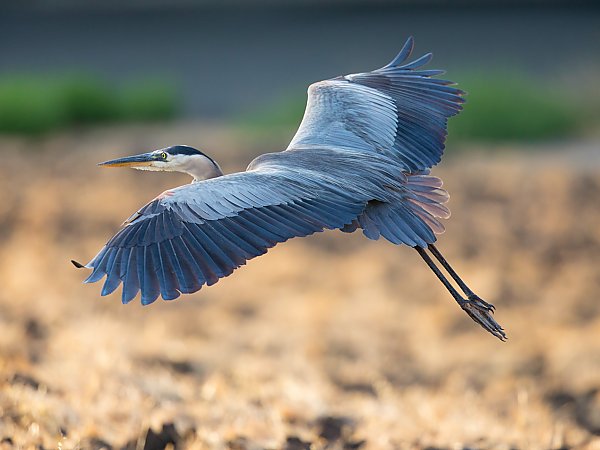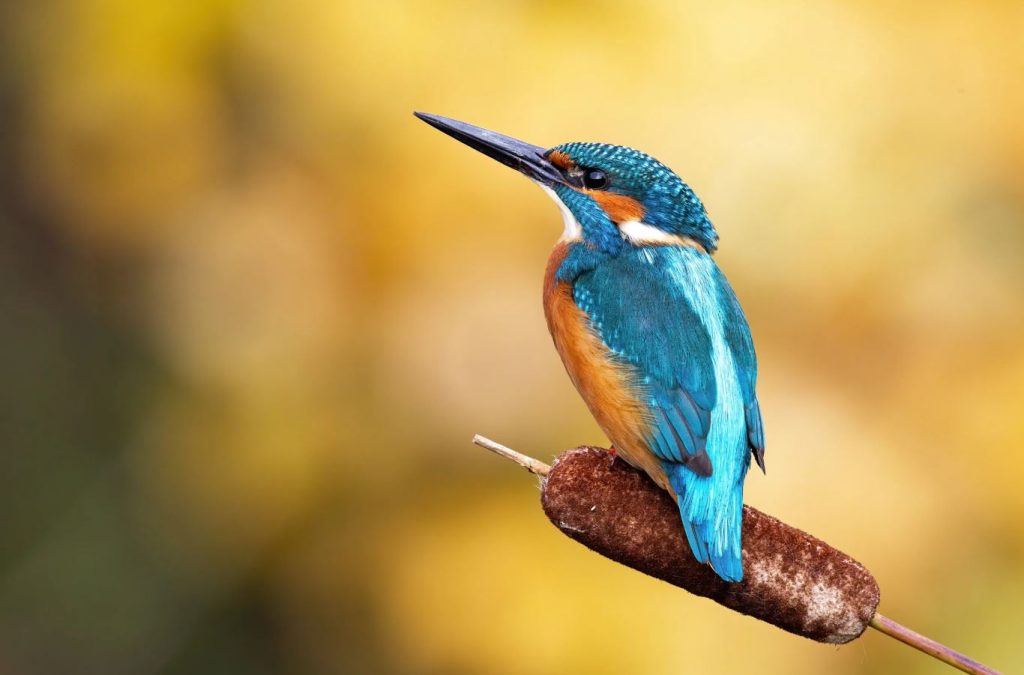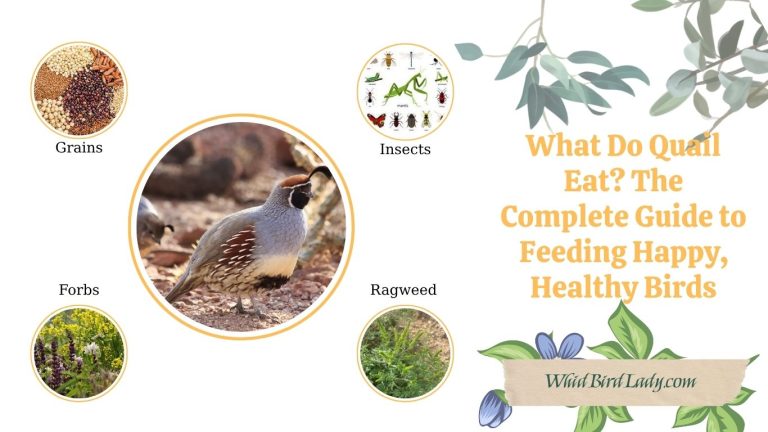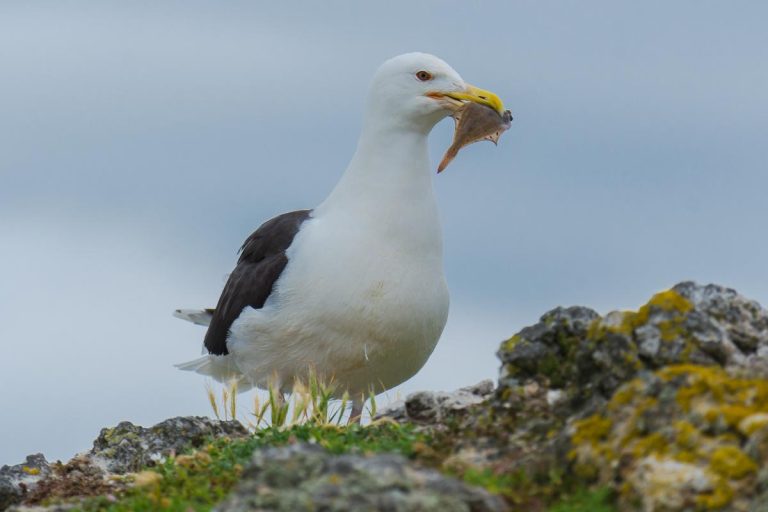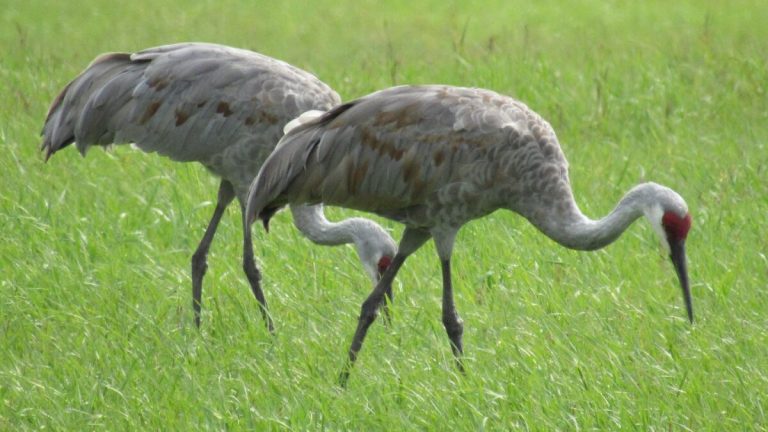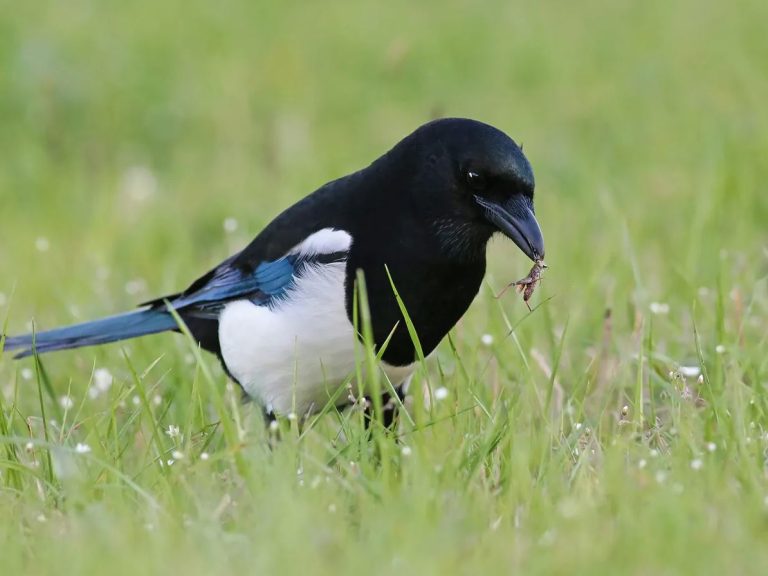What Birds Eat Fish? 15 Spectacular Fish-Hunting Birds You Shouldn’t Miss
💡 This article explores 10 different birds of prey that eat fish, discussing their habitats, appearances, and hunting techniques.
Imagine walking along the riverbank, the sun glistening off the water’s surface with the vibrant colours of the riverscape reflecting all around you. As you enjoy the scene’s serenity, you are suddenly left awestruck as a magnificent bird of prey soars overhead, effortlessly plunging into the water and re-emerging with a fish firmly in its talons. This fascinating display of grace, power, and precision leaves you yearning to know more about the captivating world of fish-eating raptors. Fear not, bird enthusiast! Today, we will embark on an extraordinary journey into the realm of piscivorous birds of prey. Get ready to dive into our treasure trove of stunning photos, identification tips, and intriguing information about 15 remarkable avian fishermen who dominate the skies and waterways.
Introduction to Birds of Prey That Eat Fish
Birds of prey are fascinating creatures that possess impressive hunting skills. Many different types of birds of prey feed on various types of prey. Some birds of prey, such as eagles and ospreys, have evolved unique adaptations that enable them to catch fish. These birds are truly remarkable, and their hunting techniques are equally impressive. In this article, we will cover 10 different birds of prey that eat fish. We’ll discuss where they live, what they look like, and how they catch their prey. You’ll better understand these amazing animals and their unique abilities by the end. So, let’s get started with our exploration of birds of prey that eat fish.
1. Bald Eagles: National Bird and Expert Fish Hunters
🦅 Bald Eagles are majestic birds of prey that mainly feed on live fish. They have a large wingspan, prefer to live near freshwater sources or saltwater coasts, and also consume small mammals, birds, and carrion.
Bald Eagles are majestic birds of prey and the national bird of the United States. They are expert fish hunters and mainly feed on live fish, which they catch by swooping down at the water’s surface and grabbing them with their strong talons. However, they will also feed on carrion if necessary. These large birds can have a wingspan of up to 7 feet and weigh up to 14 pounds when fully grown.
Bald Eagles can be found across North America, Central America, and northern South America. They prefer to live near freshwater sources or saltwater coasts along the shoreline of estuaries and other wetlands around inland lakes and reservoirs on offshore islands, coastal lagoons, and bayous. While fish make up the majority of their diet, they will also eat small mammals, birds, and carrion. Despite being carnivorous animals, Bald Eagles are beloved for their beauty and symbolism as a national symbol.
2. Ospreys: Unique Adaptations for Fishing
🐟 Ospreys rely heavily on fishing as their primary food source. They have specialized adaptations such as long legs, large feet with hooks and barbs, and oily wings to help them catch and consume fish. They usually reside near water and mate for life.
Ospreys are raptors that rely heavily on fishing as their primary food source. Their unique adaptations give them an advantage in catching fish and make them well-adapted to their environment. With long legs and large feet equipped with specialized hooks and barbs, they can easily grasp fish. They also have a reversible outer toe that allows them to point two toes to the front and two to the rear, giving them an even stronger grip. Their oily and waterproof wings help them stay afloat while diving into the water, and they have the ability to close their nostrils to prevent water from entering.
Due to their slender and elongated bodies coupled with long wings, Ospreys can generate extra lift, allowing them to fly up and out of the water with heavy prey in tow. Once they catch a fish, they use their sharp black hook-tipped bills to consume it. With their brown backs, white chests, and distinct black eye stripe, Ospreys have yellow eyes and white heads that can easily differentiate them from other raptors like eagles. Their average wingspan of 5 feet makes them one of the largest birds of prey. They usually reside near water, where they can catch fish, nesting on man-made structures like pilings, telephone poles, and channel markers.
Osprey pairs are usually monogamous and tend to mate for life. They have an established nesting site which is selected by the male, usually on a dead tree, cliff, or man-made structure near the water source. The female lays between two to four eggs. The chicks are born a few days apart, and the older chick usually dominates and gets the most food, while the younger one may starve if there is a shortage of food. Ospreys incubate their eggs together, and chicks learn to fly after two months. They remain in the nest for another two months, receiving food and protection from their parents and learning to fish. Ospreys have a lifespan of up to 25 years, but the average lifespan in the wild is usually less.
3. Peregrine Falcons: Fastest Birds in the World
🚀 Peregrine Falcons are the fastest birds in the world, capable of flying at speeds up to 242 mph. They have specially adapted wings for speed and manoeuvrability.
Peregrine Falcons are known to be the fastest birds in the world. Their incredible speed is due to their specially adapted wings and respiratory and circulatory system, allowing them to fly at an impressive speed of up to 242 mph (389.46 kph). This phenomenal speed makes them the fastest birds and the fastest animals in the world. While not all birds can match the speed of these impressive birds, many birds on this list are still incredible flyers, experts, land and water creatures.
Birds must have a lightweight body and a good set of wings to be able to fly. Four basic elements determine a bird’s ability to fly. Birds’ wings must be broad and rigid, allowing them to soar through the air, and their bones must be light but solid. Their feathers are smooth, almost weightless, and allow air to pass by and through them easily. Beaks are also less weighty than jaws full of teeth. In addition, birds need powerful muscles on strong bones to create a platform for flight.
Peregrine Falcon’s wings are unique and well-adapted to its need for speed. Birds have different types of wings depending on their daily activities. Birds that fly at high speeds have slender wings that sweep backwards, allowing for less drag, so they do not have any wing slots at the tip to slow them down. Instead, the wing ends with a slender tip reducing drag, making them suitable for fast-flying birds like Peregrine Falcons.
The Peregrine Falcons’ elliptical wings are broader and elliptically shaped to aid in manoeuvring. In contrast, bird species with soaring wings have long, narrow, slender ones to spend much time in the air without expending much energy. High-lift wings are broader, have wing slots, and are longer than elliptical wings, making them suitable for birds that fly high up in the air, such as hawks. Peregrine Falcon’s high-speed wings allow them to achieve impressive speeds. Their wings are slender and more extensive than soaring ones, helping them fly fast despite their lack of wing slots.
4. American Kestrels: Small but Mighty Fish Hunters
🎣 American Kestrels are small falcons known for their ability to hunt fish. They are built for aerodynamic flight, can catch flying insects and small birds, and are currently facing population decline.
American Kestrels are small but mighty birds of prey that are known for their ability to hunt fish. Despite their tiny size, these falcons can take down fish much larger than themselves. Their preferred habitats include meadows, prairies, and farmland, but they can also be found in urban settings, such as New York City.
One of the unique features of American Kestrels is that males and females look very different from one another. Males have slate-blue wings and reddish-brown to white chests, while females have reddish-brown and streaked cream chests. Both sexes have black vertical stripes on the side of their faces. Additionally, females are typically 10-15% larger than males.
American Kestrels are built for aerodynamic flight and manoeuvrability, allowing them to hunt fish easily. They are also capable of catching flying insects and small birds. Caught in a headwind, these birds can hover like a helicopter, allowing them to focus on their prey.
Although American Kestrels have the ability to see ultraviolet light waves, which allows them to track prey by following urine trails, their population is currently in decline due to habitat loss, predation, pollution, car mortality, and competition for nesting sites with invasive European Starlings. Chemicals like pesticides and rodenticides also pose a threat to their survival.
Despite their small size, American Kestrels are impressive fish hunters. These birds are well-equipped to catch their prey with their aerodynamic flight and manoeuvrability. However, it is important to take action to protect their habitats and prevent further decline in their population.
5. Red-tailed Hawks: Powerful Hunters of Land and Sea
🦅 Red-tailed Hawks are adaptable hunters that feed on small mammals, birds, reptiles, insects, and carrion. They have broad-rounded wings, short tails and thrive in various habitats.
Red-tailed Hawks are known to be one of the most common and recognizable hawks in North America. They are powerful hunters of the land and sea, with the ability to adapt to several different types of terrains. This bird is known for its broad-rounded wings and short tail, making it easy to spot on long car rides or perched atop telephone poles. With their sharp eyesight and broad wings, they are able to soar above open fields or dive steeply to catch their prey.
These majestic birds have a diet that varies depending on the season and location, but they mainly feed on small mammals such as rabbits, rats, voles, and ground squirrels. They may also feed on birds, reptiles, insects, and carrion. When in courtship, the male and female soar in high circles with shrill cries. The male may even catch prey and pass it to the female in flight.
Red-tailed Hawks typically build their nests in trees up to 120 feet above the ground, with the nest being a bulky bowl of sticks lined with finer materials. The female remains with the young most of the time during the first couple of weeks, while the male brings the food and feeds the young. Food is dropped in the nest after about 4-5 weeks, and the young feed on it themselves. The young leave the nest about 6-7 weeks after hatching, but they are not capable of strong flight for another two weeks or more. Fledglings may remain with their parents for several more weeks.
It’s quite rare for Red-tailed Hawks to attack dogs or cats, but they are known to defend their nests aggressively against potential threats, including humans. These remarkable birds are adaptable and have nestled in habitats such as open country, woodlands, prairie groves, mountains, plains, roadsides, and even cities. Their beautifully unique features and ability to thrive in different environments make them a beloved sight for birdwatchers and nature enthusiasts alike.
6. Northern Harriers: Stealthy Hunters of Marshes and Wetlands
🕊️ Northern Harriers are distinctive hawks known for hunting low over fields, marshes, and wetlands. They have long wings and tails, eat small mammals, birds, and rodents, and may nest in colonies.
Northern Harriers are birds of prey that are often seen hunting low over fields, marshes, and wetlands. With their long wings and tails, they are very distinctive hawks. They are usually seen quartering low over the ground in open country, scanning the ground for prey. Compared to most other hawks, Northern Harriers have a face similar to that of an owl, and they may use their keen hearing to locate prey. Males tend to fly lower and faster than females. They mostly eat small mammals and birds, but their diet varies with location and season. They specialize in eating voles, rats, and other rodents and consume insects, snakes, lizards, toads, and frogs. They may also feed on carrion in winter. Northern Harriers often nest in loose colonies; the male may have two or more mates. The female builds the nest, which may be a shallow depression lined with grass or a platform of sticks and weeds. Young harriers are able to fly for about 30-35 days.
7. Brown Pelicans: Skilled Divers of Coastal Waters
🐦 Brown Pelicans are skilled divers and mainly feed on fish. They are found along the Atlantic and Pacific coasts and work together to encircle fish before diving to catch them.
Brown pelicans are one of the most skilled divers of coastal waters. They can be observed soaring gracefully and then suddenly plunging headfirst into the sea. Found solely in the Americas, they are mainly seen along the Atlantic Coast from Virginia to northern South America and on the Pacific Coast from British Columbia to Ecuador. Brown pelicans have a distinct appearance with a white head and yellowish crown, a dark maroon-brown neck and upper sides, and a pale yellowish patch on the lower foredeck. Their diet consists mainly of fish, but they occasionally eat crustaceans and invertebrates. They are skilled hunters and often work together to encircle fish before diving in to snatch them up.
8. Double-crested Cormorants: Deep Divers for Freshwater and Saltwater Fish
🌊 Double-crested Cormorants are diving birds found in various aquatic habitats. They feed on a wide variety of aquatic life and are colonial nesters.
The Double-crested Cormorant is a dark, long-bodied diving bird found in various aquatic habitats such as coasts, bays, lakes, and rivers. It is North America’s most commonly distributed cormorant and can be seen in freshwater and saltwater environments. The cormorant is a highly adaptable bird and can thrive in almost any aquatic habitat, from rocky northern coasts to mangrove swamps to small inland ponds. It is often seen floating low in the water with its thin neck and bill raised or perching upright near the water with its wings half-spread to dry.
The Double-crested Cormorant primarily feeds on aquatic life, including a wide variety of fish, crabs, shrimp, crayfish, frogs, salamanders, eels, molluscs, and even plant material. Their diet can vary depending on the season and location. They forage mostly by diving from the surface and swimming underwater, propelled by their feet, sometimes using their wings as well.
This species is a colonial nester and can be found in large nesting populations near water, such as on sea cliffs, shallow water bodies, or ground on islands. The nest is a platform of sticks and debris lined with finer materials, built mostly by the female and brought by the male. The female typically lays 3 to 4 blueish-white eggs that become nest-stained, and both sexes incubate the eggs for 25-33 days. After 3-4 weeks, young Double-crested Cormorants may leave the ground nests and wander through the colony but return to the nest to be fed.
The Double-crested Cormorant population had a long-term decline due to persecution at nesting colonies until the 1920s, followed by a gradual increase until the 1950s. However, their numbers dropped again in the 1960s due to the effects of persistent pesticides. After DDT was banned in 1972, populations began increasing again, and the species is still increasing and expanding its range today. Nevertheless, wildlife management agencies have culled some nesting populations in some regions due to concerns that birds would crowd out other colonial waterbirds. [17][18]
9. California Condors: Endangered but Important for Maintaining Ecosystems
The California condor is one of the largest flying birds in the world, with a wingspan of over nine feet from tip to tip. Both the California and Andean condors are endangered species, and their survival is crucial for maintaining ecosystems. These vultures feed solely on carrion, often dead animals found in the air, and nest in cliff caves or giant sequoia redwood trees. However, they faced many problems in the past centuries, including habitat destruction, poaching, and contamination from lead and environmental pollutants. Illegal killing and the loss of food supply also threatened their survival. Today, efforts to restore the condor population include captive breeding programs and non-lead zones for hunting within their range. As of 2019, their world population is 518, with over 50 condors reintroduced into five different sites annually. Monitoring and conserving their habitat and avoiding environmental toxins is crucial for their survival.
10. The Great Blue Heron’s Fishy Feast: A Marvel to Behold
The Great Blue Heron is an elegant bird that has captured the attention of nature lovers and bird enthusiasts alike. One reason for this is the bird’s hunting prowess, which is truly a marvel to behold.
One of the Great Blue Heron’s favourite foods is fish, and watching it hunt for food is a sight to see. The bird will stand motionless in the water, waiting for a fish to swim by. Then, with lightning-fast reflexes, the heron will strike its prey, plunging its sharp beak into the water to catch the fish.
Once caught, the Great Blue Heron will use its beak to manipulate the fish, tossing it up in the air and catching it in its mouth. This process can be repeated several times before the heron swallows the fish whole.
The Great Blue Heron is also known to use its wings to help it catch fish. By spreading its wings like a canopy, the bird can block the light and create a shadow that attracts fish. As fish swim towards the shadow, the heron can swoop down and catch them.
In addition to their hunting skills, Great Blue Herons are also admired for their beauty. With their light-blue feathers, long necks, and sharp beaks, they are truly a sight to behold.
In conclusion, the Great Blue Heron’s fishy feast is a marvel to behold. From their lightning-fast reflexes to their graceful movements, these birds are truly a testament to nature’s beauty and complexity. So next time you find yourself near a pond or river, keep your eyes open for the Great Blue Heron – you may witness a fishy feast!
11. Kingfishers: The Ultimate Hunters of Aquatic Prey
Kingfishers are known as the ultimate hunters of aquatic prey. With their sharp vision and swift movements, they are able to catch their prey with remarkable accuracy. These birds are widely distributed throughout the world, with some species found in Europe, Asia, Africa, and, most notably, the Americas.
The primary diet of kingfishers consists of fish, although they also eat insects, crustaceans, and amphibians. With their strong bills, they are able to catch and kill their prey quickly, often by diving into the water from a perch above. In fact, some species are able to dive up to 25 meters deep to catch their prey.
Kingfishers are not only adept hunters, but they are also highly adapted to their aquatic environments. They have unique physical characteristics, such as a streamlined body shape and specialized feathers that allow them to swim and dive efficiently. Additionally, they are able to adjust the position of their eyes to account for the varying refraction of light in water, allowing them to more accurately spot their prey.
Overall, kingfishers are fascinating birds that have evolved to become exceptional hunters of aquatic prey. From their keen vision and swift movements to their unique physical adaptations, these birds are a true wonder of the natural world.
12. Skybound Swoopers: Discovering the Osprey’s Unique Fishing Skills
Ospreys are fascinating birds of prey found in many parts of the world. These sky-bound swoopers have unique skills that enable them to catch fish in water bodies. Their remarkable fishing techniques have amazed humans for centuries.
One of the most distinctive features of the osprey is their powerful legs and sharp talons that they use for fishing. The osprey has a reversible outer toe that it can use to grasp prey with two toes in front and two in back, giving them an extra tight grip. They also have barbs on their feet to help them hold onto slippery fish.
But in order to catch a fish, an osprey must be able to see it first. Ospreys have exceptional eyesight, with the ability to see prey in both air and water from a distance of up to 60 meters. This enables them to spot fish swimming in the water from high above.
Once an osprey has spotted a fish, it dives feet-first into the water, sometimes completely submerging itself. The osprey can adjust the angle of their dive, the speed at which they enter the water, and the depth at which they catch the fish. They can also adjust mid-air their dive if they miss the target on their initial attempt.
Ospreys are able to dive into the water at speeds up to 80kph, allowing them to catch fish weighing up to 1 kg. Once caught, they will bring the fish to the surface and shake it to remove any excess water before flying off to eat it.
The osprey’s unique fishing skills have made them a symbol of strength and power in many cultures around the world. They are truly remarkable birds and a wonder to behold in action.
13. Coastal Guardians: The Mighty Brown Pelican and Its Seafood Specialization
The brown pelican is one of the most iconic and beloved birds along the coasts of North and South America. These large birds are known for their unique appearance, with long bills and large, pouch-like throats that they use to scoop up fish and other marine life from the water. As skilled predators, brown pelicans play an important ecological role in helping to keep coastal ecosystems healthy and balanced.
One of the key features that sets brown pelicans apart from other birds that live near the coast is their incredible seafood specialization. Unlike gulls and other coastal birds, which may eat a variety of foods including plants, insects, and small animals, brown pelicans rely almost entirely on fish and other marine life. They are able to catch a wide range of prey including anchovies, sardines, and herring, as well as larger fish such as mullet and sheepshead.
Due to their reliance on fish and other marine life, brown pelicans are particularly vulnerable to changes in the health of coastal ecosystems. Pollution, overfishing, and habitat destruction can all have negative impacts on the populations of fish and other prey that brown pelicans rely on to survive. As a result, efforts to protect and restore coastal ecosystems are incredibly important for these amazing birds’ long-term health and survival.
Despite their challenges, brown pelicans continue to be a symbol of resilience and strength along the coasts of the Americas. Their unique adaptations and remarkable skill as hunters make them a vital part of coastal ecosystems and essential partners in protecting and preserving these fragile and important ecosystems for generations to come.
14. Submerged Hunters: Discovering the Cormorant’s Deep Diving Tactics for Fish
For years, scientists have been fascinated by the cormorant’s impressive diving capabilities and the tactics it employs to catch fish underwater. To better understand these tactics, researchers have turned to technology to observe the bird’s hunting behavior.
Using underwater cameras and GPS trackers, scientists have discovered that cormorants can dive as deep as 150 feet in search of prey and remain underwater for up to three minutes at a time. They also found that the birds use a variety of techniques to catch fish, including zigzagging through schools and using their wings to propel themselves towards their target.
One particularly fascinating technique is called “gular pumping,” where the cormorant uses its throat to create suction and suck in fish. This technique allows the bird to catch larger fish than it would be able to simply swallow whole.
These deep diving tactics are not without their drawbacks, however. Researchers have observed that cormorants can experience decompression sickness, much like human divers, if they dive too deeply and surface too quickly.
Understanding the diving capabilities and hunting techniques of the cormorant not only sheds light on this remarkable bird, but can also provide insights into the underwater world and the complex relationships between predator and prey.
15. Streamside Hunters: The Enigmatic Belted Kingfisher’s Flair for Freshwater Fishing
The belted kingfisher is a fascinating bird with a flair for freshwater fishing. As its name suggests, the kingfisher is often found along the banks of streams and rivers, perching on a branch overhanging the water, waiting patiently for its next meal to swim by.
Despite their small size (the average adult kingfisher is only about 7 inches long), these birds are skilled hunters with sharp eyesight and lightning-fast reflexes. When they spot a fish swimming below, they dive headfirst into the water, snatching it up in their long, slender beak.
But the kingfisher’s elegance and grace belie a fierce and competitive nature. These birds will fiercely defend their territory from other kingfishers, even engaging in aerial battles to protect their fishing grounds.
Despite their territorial nature, kingfishers are opportunistic feeders and occasionally eat insects, crustaceans, and small amphibians if fish are scarce. They are also known to store excess food in their burrows for later consumption.
Overall, the belted kingfisher is a complex and enigmatic bird that continues to fascinate birdwatchers and nature enthusiasts alike. Whether you’re a seasoned birder or just starting out, observing one of these birds in action will surely be an unforgettable experience.
Conclusion
Birds of prey that eat fish possess unique adaptations that help them catch their prey. These predators include the bald eagle, which can carry fish up to 34 inches long and rip them apart with its talons. Common terns plunge headfirst into the water from heights of up to 20 feet to catch fish, while ospreys have reversible outer toes that help them grab slippery fish. Pelicans scoop up large quantities of fish into their expandable throat pouches. Herons and egrets use their sharp beaks to spearfish, while kingfishers dive into the water at high speeds to snatch fish out of the water. These birds are impressive hunters that demonstrate the diversity and creativity of nature.

